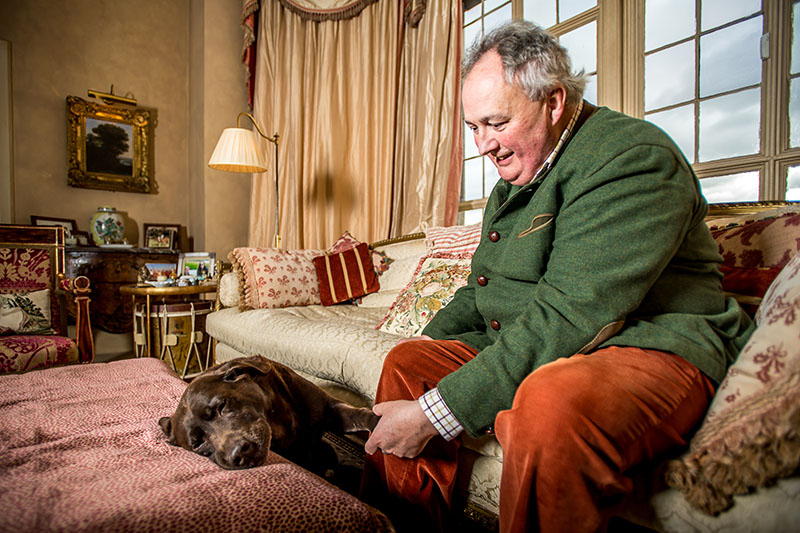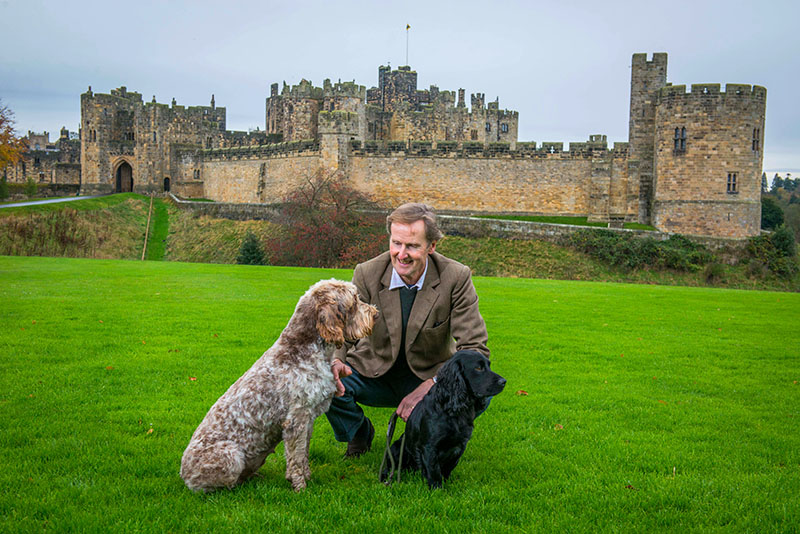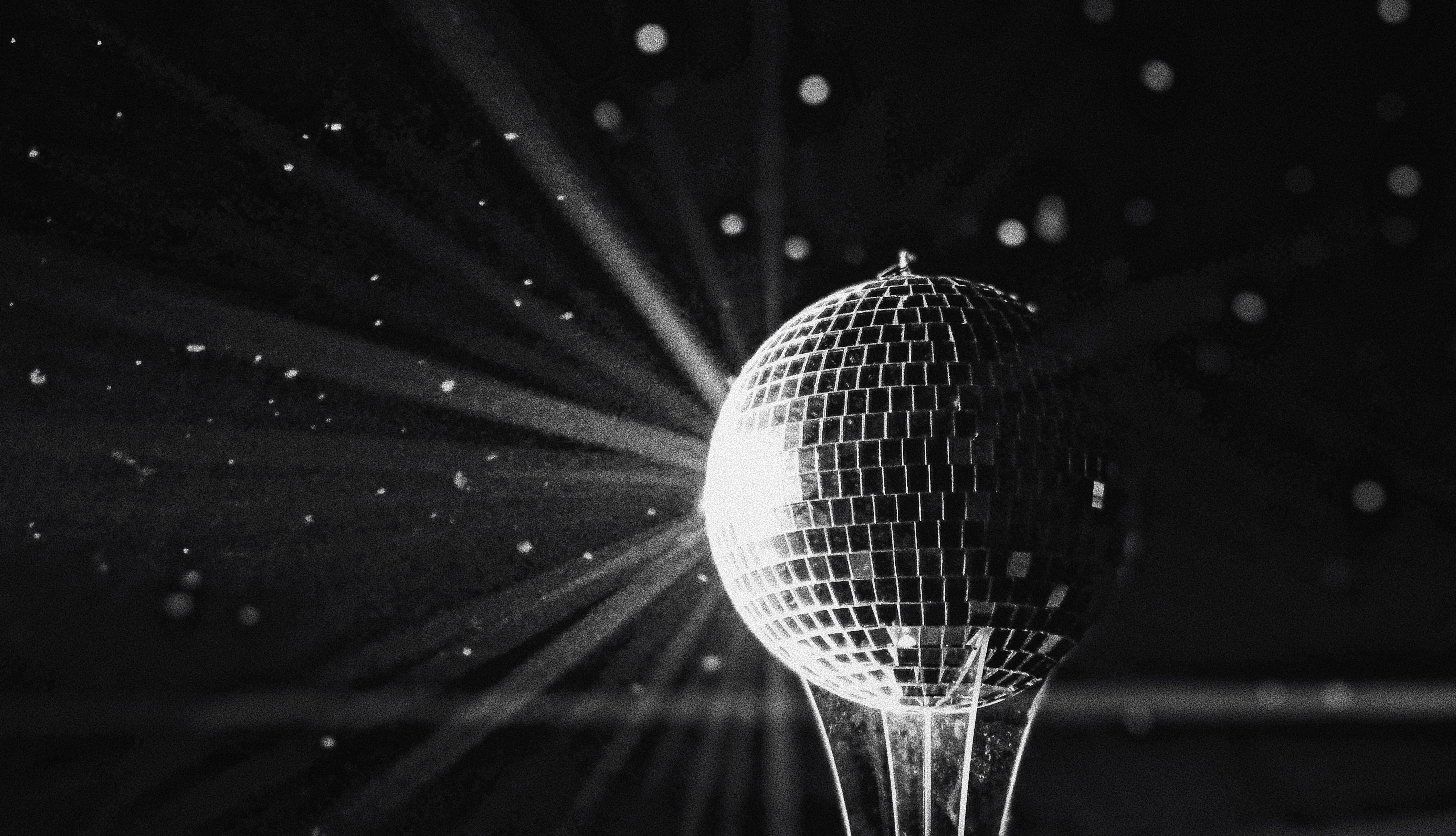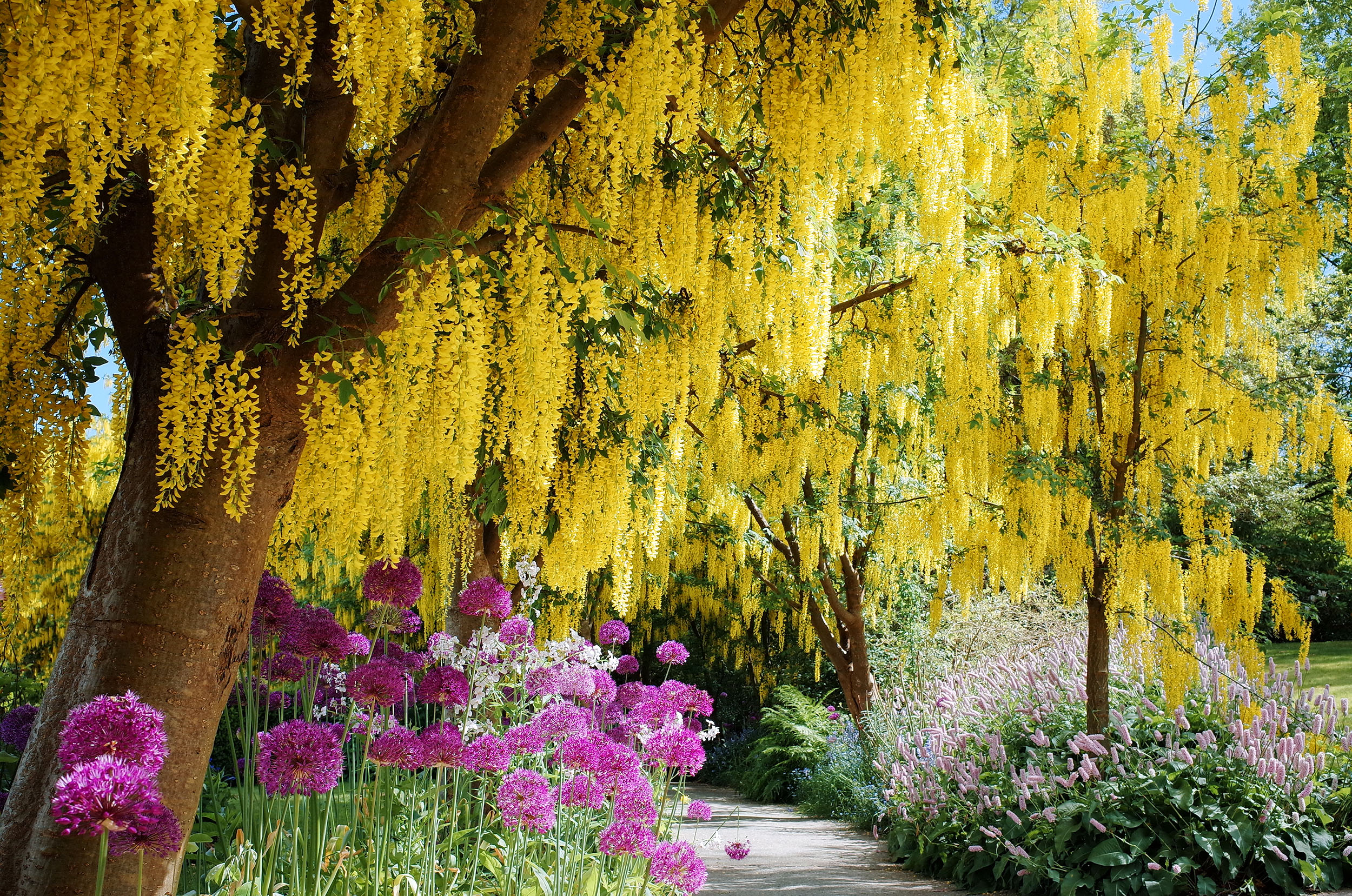Dukes and their dogs: Why Britain's aristocracy are just as mad about their canine friends as the rest of us
Stylish canines have long been a duke's or duchess's best friend, as Matthew Denison found out.


Britain’s aristocracy have always been as dog-mad as the rest of us. In 1892 the new Duchess of Newcastle – well known among the canine cognoscenti as a breeder of fox terriers – paid £200 at Crufts for a dog called Oudar, equivalent to £20,000 in today’s money. It was one of 16 borzois sent to Crufts that year by Nicholas II of Russia, and became the first of the Duchess’s 13 borzois.
Others have been so attached to their canine pals that they’ve had the greatest artists in the land commit their likenesses to canvas. So attached was the 4th Duke of Rutland to two of his dogs, a black-and-tan terrier called Crab and a Spitztype called Turk, that, in 1777, he commissioned their portrait from George Stubbs. The following year, he invited Stubbs to paint Turk again and, in 1780, both dogs were included in Reynolds’s portrait of the Duke’s children, the Marquis of Granby and Lady Elizabeth Manners.
Today’s dukes are just as keen on dogs. The Duke of Leinster is currently training a new gundog, Nora the Korthals griffon, and he and the Duchess also own a five-month-old Tibetan spaniel called Neville. The Duke and Duchess of Grafton have mongrels acquired for their young children. At Belvoir Castle, the Duke and Duchess of Rutland and their five children have seven dogs, including terriers, labradors and cross-breeds.
‘Dogs are essentially hairy companions and, in that sense, members of the family,’ the Duchess of Leinster tells me. ‘We are always heartbroken when they die. A house isn’t really a home without a dog – although it would be a lot cleaner!’
The Duke of Rutland and Nelson

In a house of many dogs – including a dalmatian called Daisy, Suzy the shih tzu and a yellow labrador called Monty – the Duke of Rutland’s particular attachment is to the dog he considers his own, an 11-year-old chocolate labrador called Nelson.
The Duke’s second chocolate lab (the first was called Pagan), Nelson was trained as a working dog, but his working days are behind him. ‘He’s old and disobedient and he may choose to pick up or he may not – but he’s got a hell of a character.’
Nelson, whose name reflects the Duke’s interest in British naval history, sleeps in a kennel on one of the castle’s terraces. This is a practical arrangement, given the logistics of life in a house like Belvoir. ‘It’s so hard here if a dog wants to go out, so hard to rush to the nearest door.’
Sign up for the Country Life Newsletter
Exquisite houses, the beauty of Nature, and how to get the most from your life, straight to your inbox.

Nelson spends much of his day indoors, however, sitting beside the Duke’s children as they watch television in the evening. He’s particularly drawn by the lure of jam tarts. ‘Loyalty is in a lab’s stomach,’ the Duke reflects.
Like many labradors, Nelson enjoys attention and contact. ‘He sits beside me and, if I don’t pay him any attention, he puts his right leg up on my knee. Then the left leg. If I still ignore him, he climbs up on to my lap.’
There have been labradors at Belvoir Castle for generations. The Duke’s grandfather had black labs and his father yellow ones, always called either Belvoir or Quest. The Duke’s mother – and the Duke himself – had basset hounds. His primary consideration in choosing a labrador is shape: ‘Nelson has a nice, wide head and a wide, square body, like traditional and beefy labs.’
When he was younger, Nelson accompanied the Duke walking or driving around the estate, friendly with those members of the public he encountered on castle open days. Today, his life is more sedentary. ‘Most of all,’ the Duke comments, ‘he’s a companion and, in effect, an old friend.’
It’s a sentiment shared by all the owners who spoke to Country Life – and one common to all of Britain’s dog owners, whether in castles or cottages.
The Duke of Northumberland and Hector

As a child, the Duke of Northumberland had a golden cocker spaniel called Cushy. Although she was named after the heroine of the Geordie folk song Cushie Butterfield – ‘She’s a big lass an’ a bonny one,/An’ she likes her beer’ – the Duke’s Cushy was gunshy: ‘When she saw a gun, she would hide under the sofa.’
After her death, Cushy’s place was taken by black labradors. ‘There’s no particular Percy family breed,’ the Duke comments. ‘One of my favourite dogs was Rupert, a collie/springer cross and a good retriever with a great character.’
The wheel has turned full circle: today, he again owns a cocker spaniel, a young black dog called Hector.
‘Like my much-loved previous black cocker Donald, who was Hector’s great-uncle, Hector is a working cocker from a line that my head gamekeeper, Colin Adamson, has bred for nearly 20 years. He’s two years old, trained by Mr Adamson and untrained by me.’
The Duke chose Hector for character and appearance as well as his working skills. He’s a good retriever, with a preference for grouse: ‘Cock pheasants are a bit big for him, but he drags them back by the neck.’
Like many young spaniels, he’s ebullient and energetic. Following a rabbit scent on the Alnwick estate, ‘he runs for miles and returns – eventually – to the whistle from the opposite direction to the one expected, so he’s well suited to the wild Northumbrian countryside’.
This wildness isn’t confined to Hector’s life in the field. At night, he sleeps between the Duke and Duchess and occasionally mistakenly jumps from the floor onto the Duchess’s head. Tactfully, he makes amends during the Duke’s absences by attaching himself to whichever family member remains in the castle, which he shares with the Duchess’s spinone, Sasha, and a Hungarian viszla called Ouzel.

However, Hector is in no doubt about his master’s identity. ‘He is my shadow,’ the Duke admits. ‘He follows me everywhere and sits on a rock staring at the water when I’m fishing.’
Hector’s preference for life outdoors suits the Duke’s sporting interests – and suits, indeed, on several levels. ‘Alnwick Castle is a difficult house for puppies and old dogs – as the many carpet stains confirm.’
Henrietta, Dowager Duchess of Bedford, and Rosie

‘A Jack Russell is a challenge and fun and it’s good when you’re older to have a dog that’s feisty and takes no truck at all,’ muses the Dowager Duchess of Bedford. As she currently divides her year between a village house overlooking Woburn’s park and her house in New Zealand, the Duchess describes her six-year-old Irish-bred terrier, Rosie, as a ‘shared’ dog. For six months of the year, she lives with New Zealand neighbours, something which she seems to take in her stride: ‘She’s very tactful. She knows that when I’m there she lives with me, although her happiest times are when all her “owners” are together.’
For the Duchess, Rosie is a friend: ‘I’ve always talked to my dogs, but I don’t treat them as people – they’re not human.’ They are, however, capable of sharing human traits. ‘My dogs have all been quite nosy, as am I. Rosie and I go looking at things.’
The Duchess remembers her parents-in-law as not being particularly doggy and, after she and her husband took over the running of Woburn Abbey, she understood why.
The Duchess had a series of steel-grey standard poodles and, afterwards, a Pekinese, but house training was decidedly difficult. ‘You have to tell the puppy to hold on as you roar down a corridor towards the outside, only to find that every door is locked. And you can’t really have a dog flap at Woburn.’
Home in the country in New Zealand presents none of the challenges of historic-house dwelling, but it does offer a great many rabbits to chase. For the Duchess, she has found, in Rosie, the right dog at the right moment in her life.
She remembers all of them with affection – ‘amusing’ Mr Chips the Maltese terrier, the intelligence of her poodles, her stubborn but delightful Pekinese – ‘but I’m a very down-to-earth sort of person,’ the Duchess insists. In independent and self-contained Rosie, she may have met her canine soulmate.
The Duke of Buccleuch and Lucy

Richard, the Duke of Buccleuch, grew up in houses full of dogs, in a family in which dogs and owners shared common traits. ‘My late aunt Elizabeth [the Duchess of Northumberland] had spaniels that were rather like her: wonderfully fresh and innocent and enthusiastic.’
Cocker spaniels were a feature of life in the Buccleuch houses of Drumlanrig, Bowhill and Boughton. The Duke’s grandmother and his aunts all had cockers. As a child, he and his brother John both had badly behaved working cockers, Sammy and Blackberry, which the Duke remembers as the bane of keepers’ lives.
However, it is labradors and Dandie Dinmont terriers with which the Buccleuch estates are particularly associated. In the second quarter of the 19th century, the 5th Duke, along with the Earl of Malmesbury, imported labradors from Newfoundland. A Buccleuch strain evolved, which survives today – ‘quite small working dogs, like a Clumber: they can cover the ground, they’re strong and easy to train’.
Thanks to the friendship between the 3rd Duke and Walter Scott, the family is also associated with the Dandie Dinmont terrier. Currently one of Britain’s most endangered breeds, it was named after a character in Scott’s novel Guy Mannering, which is set locally.
Today, an ‘angelic’ Dandie Dinmont lives at Bowhill. Her name is Lucy and she belongs to the Duke’s caretaker, Calum Flanders.

‘I feel very strongly about Dandie Dinmonts,’ the Duke tells me. ‘They desperately need people to want to own them. I need to have one.’
And that is just what the Duke plans to do. Over the course of their married lives, the Duke and Duchess have had three labradors and two spaniels. Their second spaniel died only recently.
Although the Duchess plans to have another cocker, the Duke, who will spend much of his time at Bowhill, is looking for a Dandie Dinmont of his own. For both owner and dog, it will represent something of a homecoming.
Country Life is unlike any other magazine: the only glossy weekly on the newsstand and the only magazine that has been guest-edited by HRH The King not once, but twice. It is a celebration of modern rural life and all its diverse joys and pleasures — that was first published in Queen Victoria's Diamond Jubilee year. Our eclectic mixture of witty and informative content — from the most up-to-date property news and commentary and a coveted glimpse inside some of the UK's best houses and gardens, to gardening, the arts and interior design, written by experts in their field — still cannot be found in print or online, anywhere else.
-
 Jungle temples, pet snakes and the most expensive car in the world: Country Life Quiz of the Day, April 14, 2025
Jungle temples, pet snakes and the most expensive car in the world: Country Life Quiz of the Day, April 14, 2025Mondays's quiz tests your knowledge on English kings, astronomy and fashion.
By James Fisher Published
-
 Welcome to the modern party barn, where disco balls are 'non-negotiable'
Welcome to the modern party barn, where disco balls are 'non-negotiable'A party barn is the ultimate good-time utopia, devoid of the toil of a home gym or the practicalities of a home office. Modern efforts are a world away from the draughty, hay-bales-and-a-hi-fi set-up of yesteryear.
By Annabel Dixon Published
-
 Jungle temples, pet snakes and the most expensive car in the world: Country Life Quiz of the Day, April 14, 2025
Jungle temples, pet snakes and the most expensive car in the world: Country Life Quiz of the Day, April 14, 2025Mondays's quiz tests your knowledge on English kings, astronomy and fashion.
By James Fisher Published
-
 School dinner puddings, Scrabble tiles and Antonio Banderas: Country Life Quiz of the Day, April 11, 2025
School dinner puddings, Scrabble tiles and Antonio Banderas: Country Life Quiz of the Day, April 11, 2025Friday's quiz asks you to name one of Britain's most beautiful places, and ponders the distance of a marathon.
By Toby Keel Published
-
 Bond's Aston Martin and Welsh rarebit: Country Life Quiz of the Day, April 10, 2025
Bond's Aston Martin and Welsh rarebit: Country Life Quiz of the Day, April 10, 2025Thursday's quiz celebrates pedestrian crossings and tests your language skills.
By Toby Keel Published
-
 Scary sharks, the T-Rex and fabulous city views: Country Life Quiz of the Day, April 9, 2025
Scary sharks, the T-Rex and fabulous city views: Country Life Quiz of the Day, April 9, 2025Wednesday's quiz takes in restaurants, beautiful cities and more.
By Toby Keel Published
-
 The beautiful island bridge, an otter's life and Churchill's TXT speech: Country Life Quiz of the Day, April 8, 2025
The beautiful island bridge, an otter's life and Churchill's TXT speech: Country Life Quiz of the Day, April 8, 2025Tuesday's quiz takes in cricket pitches, frittatas and more.
By Toby Keel Published
-
 An architectural masterpiece, frog eyelids and Wordsworth's house: Country Life Quiz of the Day, April 7, 2025
An architectural masterpiece, frog eyelids and Wordsworth's house: Country Life Quiz of the Day, April 7, 2025Plus the longest bridge in Europe, all in Monday's quiz.
By Toby Keel Published
-
 Hold the front page: How to find the ladybird hiding on this week's Country Life cover
Hold the front page: How to find the ladybird hiding on this week's Country Life coverDid you struggle to find the ladybird on this week's Country Life front cover? You weren't the only one.
By Rosie Paterson Published
-
 The poisonous tree lighting up your garden, and name that Farrow & Ball colour: Country Life Quiz of the Day, April 4, 2025
The poisonous tree lighting up your garden, and name that Farrow & Ball colour: Country Life Quiz of the Day, April 4, 2025Plus classic children's literature and one of Europe's most beautiful cities in Friday's quiz.
By Toby Keel Published